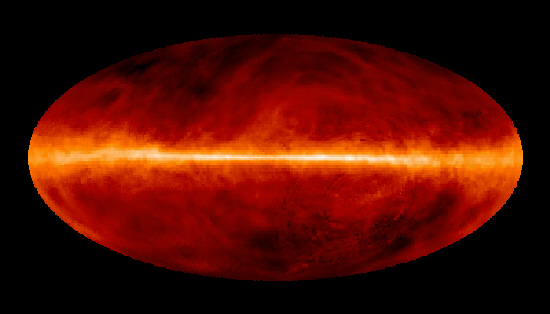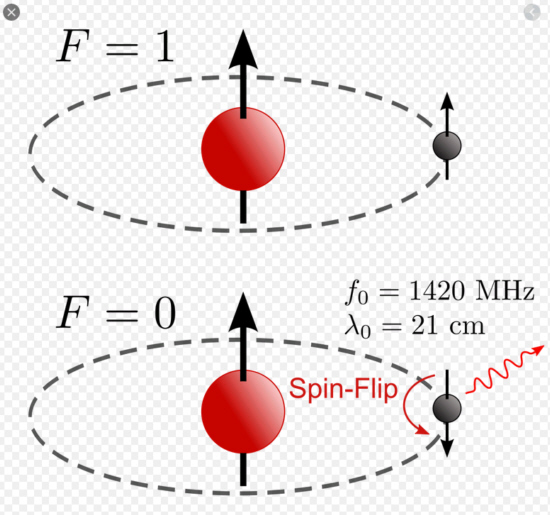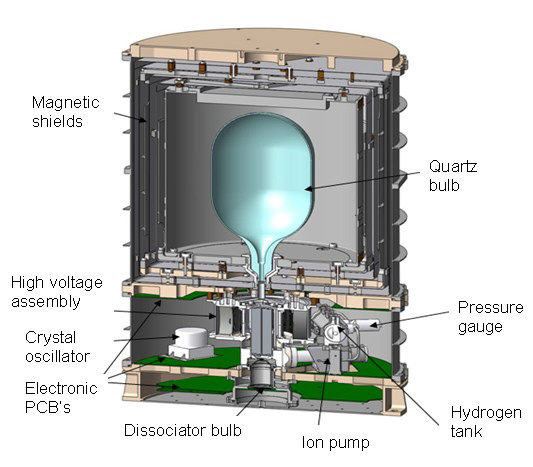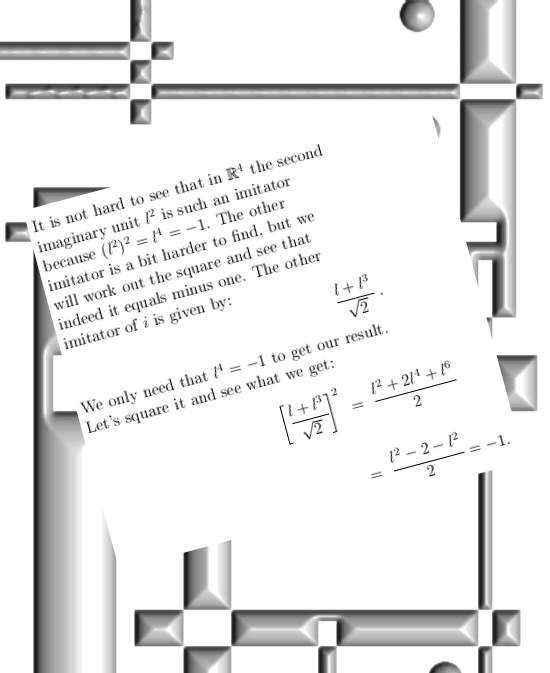I estimate that most of my readers are familiar with emission and absorbtion spectra as used in astronomy. Light is produced when electrons fall in to a lower energy state in atoms, but that same light (the photons so to say) can also exite another electron in another atom and as such the photon gets absorbed.
Another example: why is glass transparent? Well the photons in the visible range have energies that do not interfere with the electrons in the glass. That is why these photons simply pass through and we can use stuff like glass for the windows in our homes.
So an element, say atomic hydrogen, is capable of emitting light at particular frequencies and at the same time that atomic hydrogen can absorb the same frequencies.
Now we go to the famous 21 cm wavelength: the standard explanation for the source of this em radiation is that in atomic hydrogen you find that both the proton and the electron have the same spin. The spins are aligned so to say and that state has a tiny bit more energy compared to the situation where the electron spins are not aligned. If the spins are aligned (that can be both up or both a down spin) there is a tiny probability that the electron spin flips. That releases a photon of 21 cm wavelength. It is never explained as why it is the electron spin that should flip, after all if the proton spin would flip this should give rise to the emission of a 21 cm photon also…
It is not much of a secret that I think that electrons are not magnetic dipoles but magnetic monopoles. Electrons get accelerated into the direction of the applied magnetic field, but if electrons were magnetic dipoles they would be neutral to external magnetic fields. Ok ok, professional physics professors come up with non homeogenous magnetic fields that should do the acceleration but if I do an easy estimate I find crazy gradients are needed. Something like 100 thousand Tesla per meter or so. It is important to remark that all those people doing the blah blah thing about inhomeogenous magnetic fields only do the blah blah thing: they never show a calculation that supports the blah blah. And yes, they also have a Hamiltonian kind of thing, but in the Hamiltonian the size of the electron is not incorperated. But the smaller in size a magnetic dipole is, the less it will get accelerated by such magnetic fields.
Another example that is hard to believe is the deflection of the solar wind by the earth magnetic field. Not only is the earth magnetic field very weak out there in space, it is hard to believe it has a serious gradient there in outer space. It must be very constant. Yet the solar wind gets deflected by the weak magnetic field of the earth. In my view this can only be done if electrons and protons are magnetic monopoles.
Here is an old ‘picture of the day’ from December 18, 1996 ‘A sky full of hydrogen’.

The spin flip that ’causes’ the 21 cm radiation seems to be a seldom thing; about once in 10 million years. And it is always mentioned that it is spontaneous. In the next picture from a wiki you see how this supposedly works. Link: Hydrogen line https://en.wikipedia.org/wiki/Hydrogen_line

Ok, what is my version of events? Very simple: Suppose there is an hydrogen atom in outer space that has it’s proton and electron carry the same magnetic charge. So both proton and electron have a north or a south magnetic charge. Suppose it is a north hydrogen atom. This atom simply bumps into a single electron having the south charge. Under the right conditions (bump not to slow and not to fast) this leads to a hydrogen atom with a north proton and a south electron. The north electron gets ejected because like magnetic charges repel. And the radiation emmited simply has wavelength of about 21 cm.
The 21 cm em radiation is also used in atomic clocks like those in the EU Galileo global satellite positioning system. In an apparatus named maser the hydrogen atoms get separated due to their magnetic charge and released in a resonance chamber. The point I want to make is that such a resonance chamber must have a very special coating on the inside otherwise the hydrogen atoms all ‘spin flip’ much to fast. So the coating must be a material without any unpaired electrons in it’s outer shell and of course it can’t be a metal because metals often have an electron sea that just sloshes around. From the ESA, here is a scetch of a hydrogen maser:

This was more or less what I had to say on this magnetic subject. If you start thinking about if it is possible that electrons are magnetic dipoles always you will find it is not logical. For example if it is true that the electron goes round the proton in atomic hydrogen, why the hell would the stuff get anti-aligned? If magnetism is just a vector pointing into some direction, if the electron goes round and round the up & down state would lead to precisely the same hydrogen atom…
All you need is a bit of logic.
Ok, we are at the end of this post. All I want to share with you is a teaser picture for the next post. The math of the next post is more or less finished but I still have to turn the stuff into the standard jpg pictures. The next post is more or less Part 21 into the basic introduction to the 4D complex numbers. I stopped those intro files back in Feb 2019, at this point in time I do not know if I will proceed but at least in a couple of days I will add post number 21 into that 4D number system. It is mainly about the so called ‘imitators of i‘, these imitators mimic the number i from the complex plane. Here is the teaser picture:

Here is an internal link to Part 20 intro to the basics of the 4D complex numbers:
That was it, thanks for your attention & in a few days the new post will be ready to publish. So see you around my dear reader.